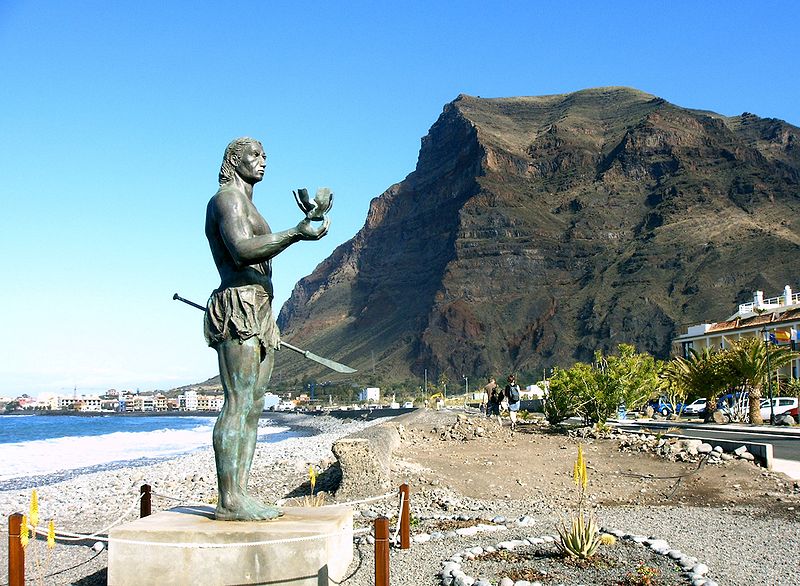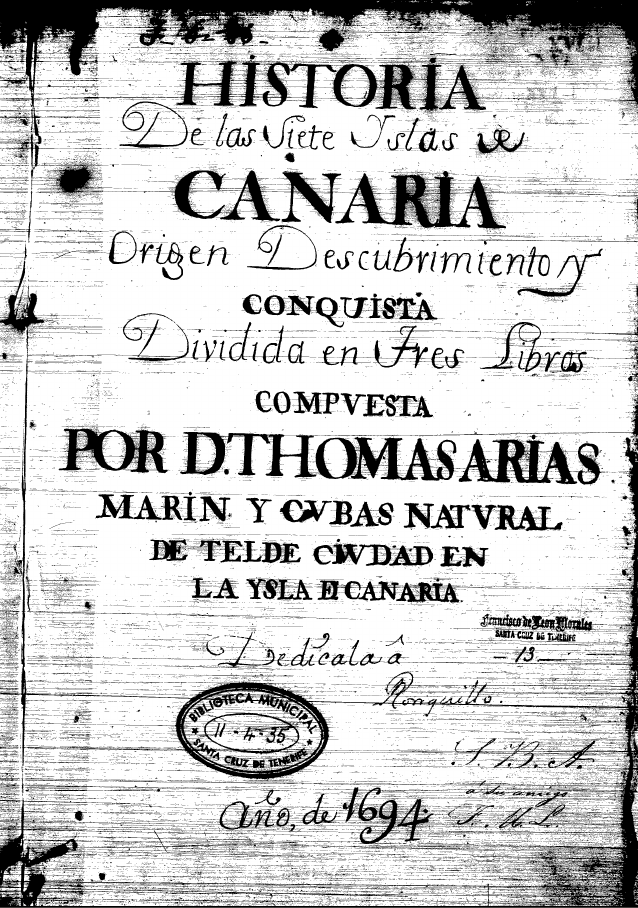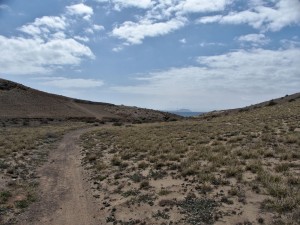The Ganigo of Guadajume (1/3): A colactation pact on La Gomera?

Idealized statue of Pedro Hautacuperche located at Valle Gran Rey, La Gomera, by sculptor Luis Arencibia. He is holding in his right hand the Ganigo of Guadajume, already broken, and in his left hand the weapon with which he killed Fernán Peraza the Younger, giving rise to the uprising of La Gomera in 1488 (source: Erik Baas / Wikimedia Commons).
To the Gomeran people, brave and beautiful, with love and respect.
November 1488. A man dressed as a woman falls murdered in the vicinity of a cave. Soon after, on the wings of an ancestral whistling language, the echo of the deep ravines on La Gomera carried a war cry: “Now the Ganigo of Guadajume is broken”.
The victim was Fernán Peraza the Younger, the Castilian Lord of the Island and Doña Inés Peraza’s favorite son, who a few months before had constituted in the second of her male offspring the entail of the Seigneury of the Isles of Canaria, which had been de facto extinct for more than ten years before. The executioner, Pedro Hautacuperche, a pastor who shepherded his flock on Plan de Asisel, in front of the imposing massive Agando Rock.
Tradition among Gomeran natives states that theirs was the only one of the Canary Islands that was never conquered by Europeans. But the truth is that the death of the Castilian Lord was met by one of the most cruel retaliations carried out on the Archipelago ever.


,%20Le%20Canarien,%20tomo%20I_portada_14230f442d9ad53d95eb03b5aa705aab.jpg)
